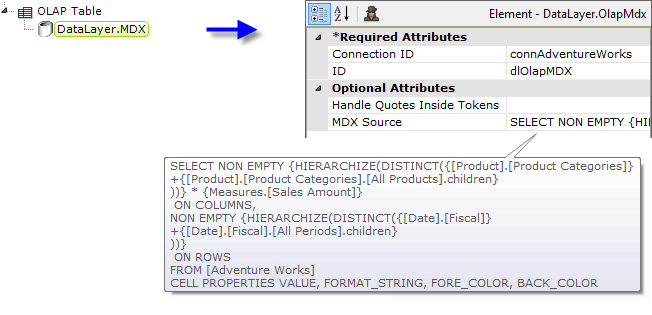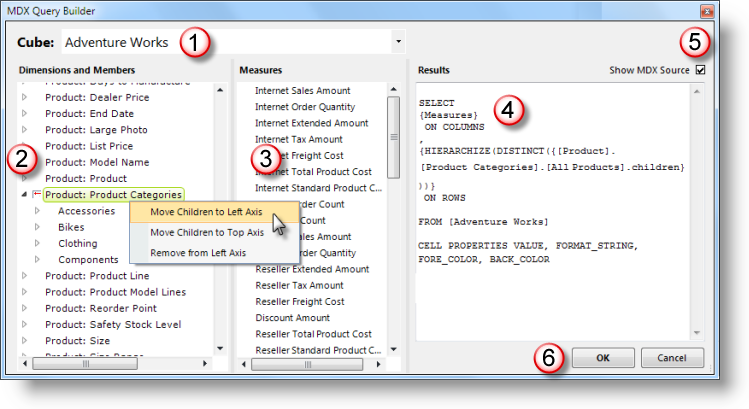DataLayer.MDX - Entering an MDX Query
When working with an OLAP Table element, you can enter an MDX query directly into the DataLayer.MDX element's MDX Source attribute. This query is executed at runtime against the datasource associated with the element's Connection ID attribute.

The example above shows a query in the MDX Source attribute value. As you can see, this type of query is relatively complex and prone to typos during entry. In order to help you formulate a correct query, instead of typing in the query you can use the MDX Query Builder tool, which is accessed by clicking the Browse button at the end of the MDX Source attribute value.

Based on the selected (1) Cube, the MDX Query Builder presents lists of (2) Dimensions and Members, and (3) Measures. These can be moved to an axis or added and removed by selecting and right-clicking them, as shown above. The (4) results of these actions can be seen in the Results panel, in tabular or (5) source code form.
Clicking (6) OK will cause the query constructed in the Results panel to be copied into the datalayer's MDX Source attribute, if the MDX Query Builder was called by clicking the attribute's browse button. Otherwise, the query text can be selected, copied, and pasted elsewhere as needed.
When a Query Has Been Entered Manually
![]() If you have already entered a query manually in the MDX Source attribute and you then open it in the MDX Query Builder, the tool will try to "reverse-engineer" the query. It succeeds at this most of the time but, if the query includes tokens or is created using a non-standard SQL language, the MDX Query Builder may fail and display an error message. This is especially likely when Logi tokens have been used outside of a SELECT statement.
If you have already entered a query manually in the MDX Source attribute and you then open it in the MDX Query Builder, the tool will try to "reverse-engineer" the query. It succeeds at this most of the time but, if the query includes tokens or is created using a non-standard SQL language, the MDX Query Builder may fail and display an error message. This is especially likely when Logi tokens have been used outside of a SELECT statement.